At the end of October and beginning of November 2017, Rebecca and I spent two weeks in Jalisco, Mexico. Photographs from this trip are posted in the Jalisco Photos gallery.
RANCHO PRIMAVERA
Our base of operations was Rancho Primavera, near the town of El Tuito (take portions of this Wikipedia entry with a grain of salt). El Tuito dates from the 16th century.
We flew from El Paso to Puerto Vallarta, via Houston, on United. The aircraft were Embraer EMB 170’s on three legs of the trip - and for a change there was leg room and storage bins fit for carry-on luggage. These are nice aircraft. In Puerto Vallarta we rented a car and drove south to Rancho Primavera. For us the drive took about an hour and a half.
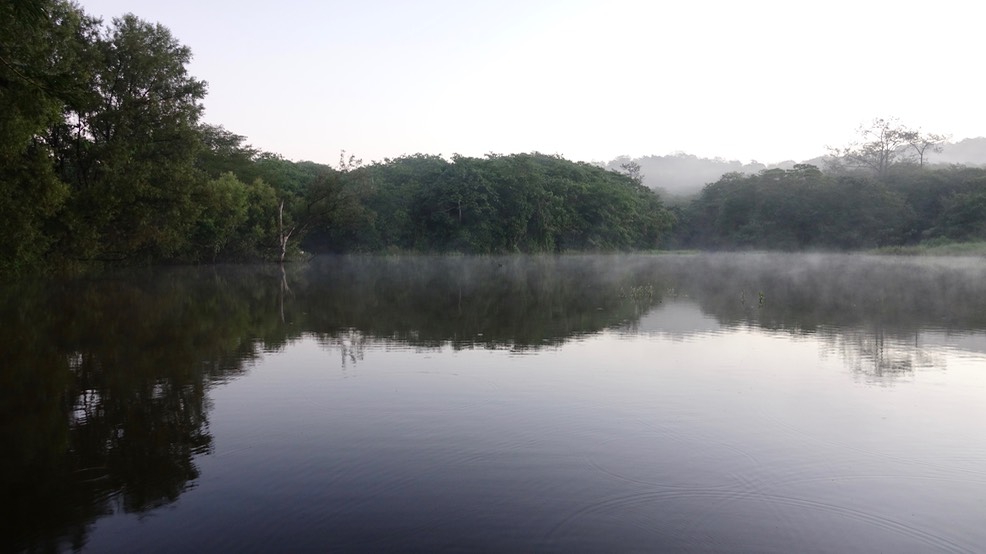
Rancho Primavera turned out to be a bit of heaven. We rented the Villa Carpintero (Woodpecker House) for two weeks (our entire stay in Jalisco). The house overlooks the pond (photos above and below), has a great covered porch where we spent hours relaxing, watching birds, and eating. It is fully equipped, a full kitchen, two baths, a formal bedroom and other areas for sleeping if you want to bring a large family, and a large dining/siting area. Bonnie and the staff at the Rancho are courteous and competent - nice people.
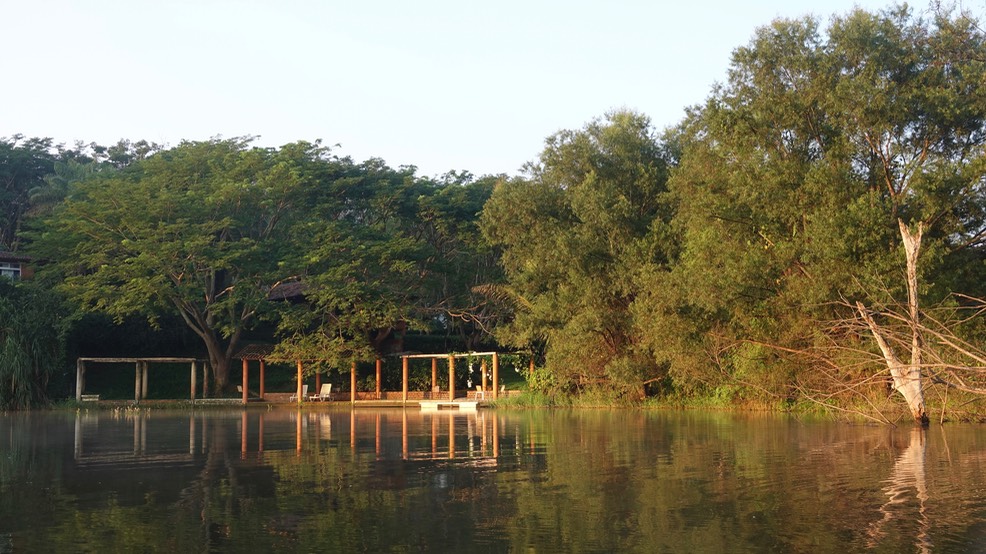
El Tuito has several food stores. Although not stocked with the range of items you would find in a supermarket in large cities, they provided more than adequate food stuffs, including fresh fruits and vegetables. There are also several small restaurants in town. (More about the town below.)

Our stay was beyond mellow. We felt very at ease, very relaxed, very comfortable… (you probably get the picture). In general, our schedule was a day trip somewhere (like the coast) followed by a day at the ranch, hiking some of its many trails. Although the house comes with a key to the door we never locked it.
The pond is large enough to warrant a row boat which we took out two times for some bird photography from water level. Many mornings we would sit on the dock (center left in the photo above) or on our porch and watch the dawn come, smile as the mist started to rise from the pond, and soak in the sounds of the Black-bellied Whistling Ducks and Egrets. Those mornings were very, very special.
I have no commercial relationship with Rancho Primavera or with Bonnie.
To access Rancho Primavera drive west from El Tuito for about 3 kilometers (see their website for specifics). The Rancho Primavera road is on the right, a one-lane track. Shortly after turning off the sealed road there is a river crossing. The ford is a concrete base, extremely solid and smooth. We encountered no issues with the ford in our Jetta. At high water levels caution is due, but water levels tend to drop quickly.
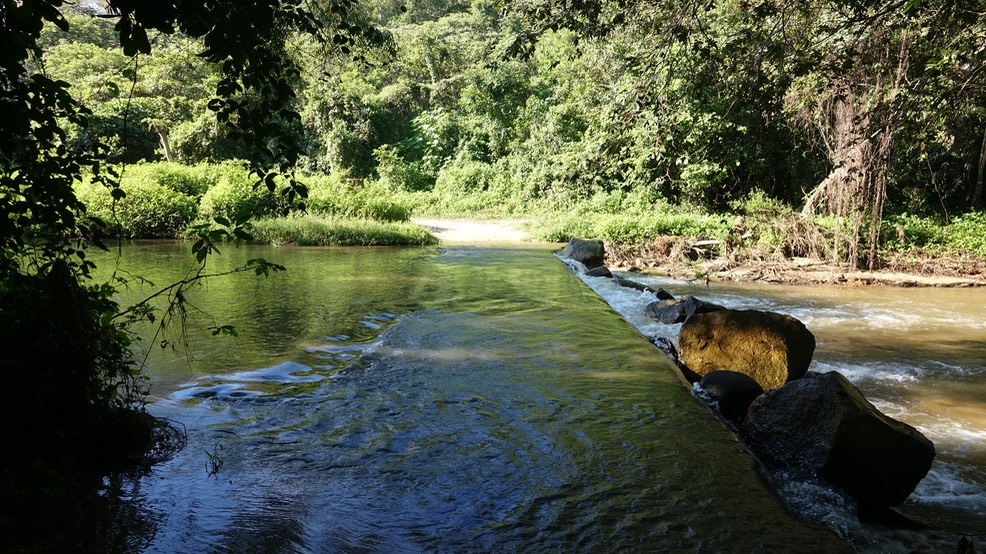
This was what I would call a “birding-lite” trip, no real hard core birding (although upon returning from the day hikes my clothes would be completely soaked with sweat - but that comes from carrying a tripod and full camera set-up).
Hummingbird feeders are provided with the house and when put up soon attracted Cinnamon Hummingbird, Black-vented Oriole, and Golden Cheeked Woodpecker. There is also a platform feeder just below the porch which attracted Golden-cheeked Woodpecker, Yellow-breasted Chat, Grayish Saltator, Rufous-backed Thrush, Blue Mockingbird, Squirrel, and Iguana. In the trees around the house we regularly saw Russet-crowned Motmot, Elegant Trogon, Citroline Trogon (once), and various Flycatchers, Wrens, and Warblers.
Hopefully, if you are a birder, you perked up at the idea that a Blue Mockingbird would be a feeder bird. The only time I had seen this species prior to this was in the state of Colima, Mexico. Then it was skulking deep in a bush and my sighting was “sub-standard”. They are known to skulk deep in bushes. At Rancho Primavera, it would stage beside the porch, sounding off for the world to hear, before it flew down to the feeder to enjoy itself. Rebecca had seen the bird while I was hiking a trail. She described it to me but I had no idea that a Blue Mockingbird would come to a feeder and never really considered it as a possibility. I had no idea what she had seen (although the description was very accurate). When we were eating dinner on the porch that evening, the Blue Mockingbird came in. Rebecca said “that’s the bird I saw”. I was dumbfounded.
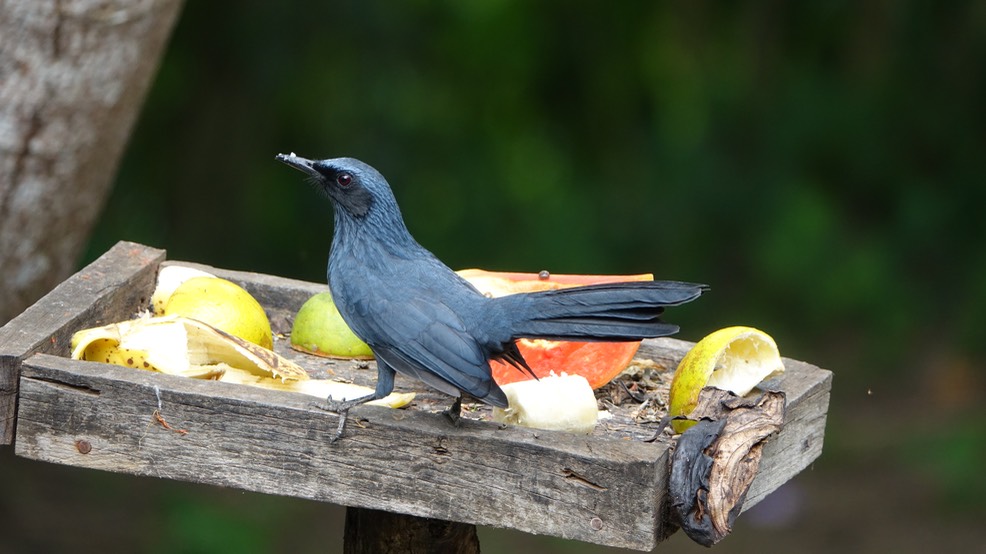
At the “main house” there are wonderful feeders as well. They attract Rufous-backed Thrush, Mexican Yellow Grosbeak, San Blas Jay, Grayish Saltator, White-tipped Dove, Black-vented Oriole, and many other species including the Black-throated Magpie-Jay. The Magpie-Jays would stage in the early morning before coming to the feeders, giving me ample opportunity for silhouette shots. Orange-fronted Parakeets frequent the fruit trees in the fields nearby.
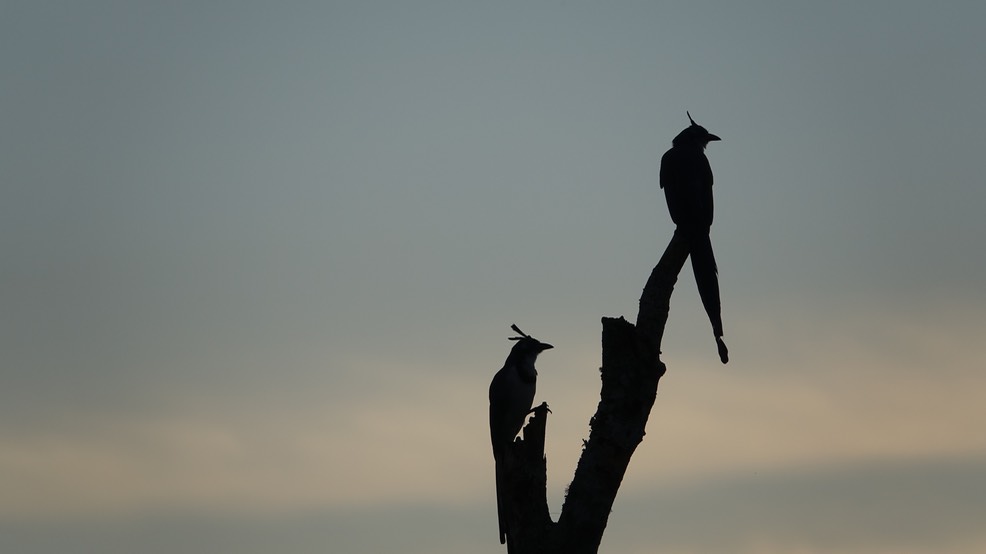
BIRDING
Since this was a “birding-lite” trip with what birding there was focused on video, I did not anticipate a long list. The following bird list from the trip is keyed to whether I was able to video the species (“V”), photograph (“P”), or only see the species (“S”), links are provided. “The pond” refers to the pond our house overlooked at Rancho Primavera. There are, however, several smaller ponds on the property.
- Black-bellied Whistling-Duck (V) and Black-bellied Whistling-Duck -2 - (V) - Several family groups on the pond. Photographs.
- Cinnamon Teal (S) - Two, on one day, on the pond.
- Ruddy Duck (V) - A few on the pond.
- Least Grebe (V) - Several on the pond.
- Magnificent Frigatebird (V) - Photographs at the coast, in particular at Tehualmixtle.
- Neotropic Cormorant (V) - Several on the pond.
- Great Blue Heron (V) - One regularly at the pond.
- Great Egret (S) - Just north of Puerto Vallarta.
- Snowy Egret (V) - Three at Boca de Tomatlán.
- Little Blue Heron (V) - Regular at the pond.
- Cattle Egret (V) - Numbers at the pond, roost nearby. Photographs.
- Brown Pelican (V) - At the coast, in particular at Tehualmixtle and Boca de Tomatlán. Photographs.
- Green Heron (V) - Regular at the pond.
- Black-crowned Night-Heron (V) - Regular at the pond. Photographs.
- White-faced Ibis (S) - Small pond beside MX-200 near Tomatlán.
- Roseate Spoonbill (S) - Just north of Puerto Vallarta.
- American Coot (V) - Regular at the pond.
- Killdeer (S) - Just north of Puerto Vallarta.
- Spotted Sandpiper (V) - At the pond. Photographs.
- Greater Yellowlegs (S) - Just north of Puerto Vallarta.
- Wilson’s Snipe (S) - At the pond.
- West Mexican Chachalaca (V) - Puerto Vallarta Botanical Garden.
- Rufous-bellied Chachalaca (S) - On the Mottled Owl trail at Rancho Primavera.
- Black Vulture (S) - Overhead at numerous locations.
- Turkey Vulture (S) - Overhead at numerous locations.
- White-tailed Kite (S) - Just north of Puerto Vallarta.
- Cooper’s Hawk (S) - From the porch at our rental.
- Common Black Hawk (V) - From our porch.
- Gray Hawk (S) - Just north of Puerto Vallarta.
- Crested Caracara (V) - At Rancho Primavera and photographs on the road to Tehualmixtle.
- Laughing Falcon (V) - La Provincia. Photographs.
- American Kestrel (S) - Just north of Puerto Vallarta.
- Peregrine Falcon (S) - MX-200 near Tomatlán.
- Rock Pigeon (S) - Puerto Vallarta.
- Eurasian Collared-Dove (S) - Just north of Puerto Vallarta.
- Inca Dove (S) - Rancho Primavera.
- Common Ground-Dove (V) - Just north of Puerto Vallarta.
- Ruddy Ground-Dove (S) - Rancho Primavera.
- White-tipped Dove (V) - Several locations at Rancho Primavera including the Mottled Owl Trail.
- White-winged Dove (S) - At the pond.
- Squirrel Cuckoo (S) - At La Provincia and at Rancho Primavera.
- Groove-billed Ani (V) - Flocks at Rancho Primavera.
- Ferruginous Pygmy-Owl (V) - Just north of Puerto Vallarta.
- Mexican Hermit (S) - From our porch at Rancho Primavera.
- Broad-billed Hummingbird (S) - Just north of Puerto Vallarta.
- Cinnamon Hummingbird (V) - At the Puerto Vallarta Botanical Garden and from our porch. Photographs.
- Citreoline Trogon (V) - Just north of Puerto Vallarta and on the Mottled Owl Trail at R. Primavera.
- Elegant Trogon (V) - Rancho Primavera, on several trails and from our porch.
- Russet-crowned Motmot (V) - Rancho Primavera, on several trails and from our porch.
- Ringed Kingfisher (V) - At the pond. Photographs.
- Green Kingfisher (V) - At the pond. Photographs.
- Acorn Woodpecker (S) - At La Provincia.
- Golden-cheeked Woodpecker (V) - At Puerto Vallarta Botanical Garden and our porch. Photographs.
- Grey-crowned Woodpecker (V) - Just north of Rancho Primavera.
- Lineated Woodpecker (S) - At Rancho Primavera.
- Pale-billed Woodpecker (S) - Just north of Rancho Primavera.
- Orange-fronted Parakeet (V) - At the main house at Rancho Primavera.
- Military Macaw (V) and Military Macaw - 2 (V) - Just north of Rancho Primavera and overhead at Rancho Primavera. Photographs.
- Ivory-billed Woodcreeper (S) - At La Provincia.
- Greater Pewee (V) - At La Provincia.
- Willow Flycatcher (S)
- Pacific Slope Flycatcher (V) - Just north of Puerto Vallarta and from our porch.
- Vermillion Flycatcher (V) - At the pond edge.
- Dusky-capped Flycatcher (S) - Just north of Rancho Primavera.
- Ash-throated Flycatcher (S) - Just north of Puerto Vallarta.
- Great Kiskadee (V) - At the pond edge.
- Boat-billed Flycatcher (S) - At La Provincia.
- Social Flycatcher (V) - At the pond edge.
- Tropical Kingbird (V) - Just north of Puerto Vallarta and at the pond edge.
- Cassin’s Kingbird (S) - Just north of Puerto Vallarta.
- Thick-billed Kingbird (V) - Just north of Puerto Vallarta.
- Masked Tityra (S) - North of Rancho Primavera.
- Black-capped Vireo (S) - Just north of Puerto Vallarta.
- Warbling Vireo (S) - Just north of Puerto Vallarta.
- Black-throated Magpie-Jay (V) - At the main house at Rancho Primavera. Photographs.
- San Blas Jay (V) - At the P.V. Botanical Garden, and at the main house, our porch at the Rancho.
- Happy Wren (V) - Just north of Puerto Vallarta.
- Sinaloa Wren (V) - Just north of Puerto Vallarta.
- Blue-gray Gnatcatcher (V) - Multiple locations including from our porch.
- Orange-billed Nightingale Thrush (V) - From our porch.
- White-throated Thrush (V) - At the Puerto Vallarta Botanical Gardens.
- Rufous-backed Thrush (V) - Multiple locations including from our porch.
- Blue Mockingbird (V) - From our porch. Photographs.
- Black-and-white Warbler (V) - Multiple locations including trails and from our porch at the Rancho.
- Yellowthroat, Grey-crowned (V) - From our porch.
- Nashville Warbler (S) - Just north of Puerto Vallarta and at Rancho Primavera.
- MacGillivrays Warbler (S)
- American Redstart (V) - From our porch.
- Tropical Parula (V) - From our porch.
- Yellow Warbler (V) - From our porch. Photographs.
- Rufous-crowned Warbler (S) - La Provincia.
- Yellow-rumped Warbler (S) - From our porch.
- Black-throated Gray Warbler (V) - La Provincia
- Fan-tailed Warbler (V) - From our porch.
- Wilson’s Warbler (V) - From our porch.
- Yellow-breasted Chat (V) - From our porch.
- Red-breasted Chat (S) - Rancho Primavera.
- White-collared Seedeater (V) - At the pond.
- Grayish Saltator (V) - At the Puerto Vallarta Botanical Gardens and from the porch. Photographs.
- Stripe-headed Sparrow (V) - Just north of Puerto Vallarta.
- Summer Tanager (S) - Just north of Puerto Vallarta.
- Mexican Yellow Grosbeak (V) - At the main house, Rancho Primavera. Photographs.
- Blue Bunting (V) - Just north of Puerto Vallarta.
- Varied Bunting (V) - Just north of Puerto Vallarta.
- Painted Bunting (V) - Just north of Puerto Vallarta.
- Great-tailed Grackle (V) - Just north of Puerto Vallarta.
- Bronzed Cowbird (S) - Just north of Puerto Vallarta.
- Black-vented Oriole (V) - At the main house, Rancho Primavera and from our porch. Photographs.
- Orchard Oriole (V) - North of Rancho Primavera
- Streak-backed Oriole (V) - From our porch.
- Baltimore Oriole (V) - From our porch.
- Yellow-winged Cacique (V) - At the Puerto Vallarta Botanical Gardens.
- Scrub Euphonia (S) - Just north of Puerto Vallarta.
The individual species videos listed above have been added to the Birds of Mexico video portfolio and to the following volumes of the Birds of Mexico Series.
Volume Three of the series combines video of the following species; Black-crowned Night-Heron, Black-bellied Whistling-Duck, Green Heron, Least Grebe, Great Kiskadee, Military Macaw, and Social Flycatcher.
Volume Four of the series combines video of the following species; Military Macaw, Black-bellied Whistling Duck, Ringed Kingfisher, Wilson’s Warbler, American Redstart, Great Blue Heron, and Cattle Egret.
Volume Five of the series combines video of the following species; Little Blue Heron, Neotropic Cormorant, Great Kiskadee, Tropical Kingbird, American Coot, Blue-gray Gnatcatcher, Black-and-white Warbler, Elegant Trogon, Russet-crowned Motmot, Green Kingfisher, and Northern Crested Caracara.
Volume Six of the series combines video of the following species; Golden-cheeked Woodpecker, Yellow-Cacique, San Blas Jay, White-throated Thrush, West Mexican Chachalaca, Grayish Saltator, Cinnamon Hummingbird, Black-vented Oriole, White-collared Seedeater, Greater Pewee, Black-throated Gray Warbler, and Laughing Falcon.
Volume Seven of the series combines video of the following species: Varied Bunting, Ruddy Duck, Mexican Yellow Grosbeak, Sinaloa Wren, Spotted Sandpiper, Groove-billed Ani, Painted Bunting, Great-tailed Grackle, Thick-billed Kingbird, Happy Wren, Ferruginous Pygmy-Owl, Common Ground-Dove, Stripe-headed Sparrow, Blue Bunting, and Citreoline Trogon.
Volume Eight of the series combines video of the following species: White-tipped Dove, Rufous-backed Thrush, Yellow Warbler, Streak-backed Oriole, Orange-fronted Parakeet, Orchard Oriole, Grey-crowned Woodpecker, Snowy Egret, Brown Pelican, Yellow-breasted Chat, Pacific-slope Flycatcher, Grey-crowned Yellowthroat, and Blue Mockingbird.
Volume Nine of the series combines video of the following species: Black-throated Magpie-Jay, Magnificent Frigatebird, Vermilion Flycatcher, Tropical Parula, Common Black Hawk, Orange-billed Nightingale Thrush, Fan-tailed Warbler, and Baltimore Oriole.
MILITARY MACAW
The capture of birds for the pet trade is a major factor in the decline of the population of targeted species. The Military Macaw is one of those targeted species. To aggravate the situation, roughly 75% of the birds which are illegally captured die before they make it to a location for sale. Just north of Rancho Primavera some local landowners have made an enterprise of trying to save the local population of Military Macaw. Logging destroys the habitat which this species relies on for survival - large trees. At the referenced sanctuary nest boxes are being attached to second growth pine trees. Thus far, the success rate for the project has been significant. Significant for both the Macaws and for the landowners who receive a fee from the tourists who visit the site. Wild birds coming to nest boxes can be quite a tourist draw. We spent a good part of the day at the sanctuary and enjoyed the experience immensely.
VALLARTA BOTANICAL GARDENS
One of our day trips was to the Puerto Vallarta Botanical Gardens which is located about half-way between Puerto Vallarta and Rancho Primavera. Admission at the time of our visit was 150 pesos a person. The gardens include both native and exotic plants, are quite pretty, and have a great trail system. Several trails meander around a small gorge so there are times when it is possible to look into the canopy from the trail - a good birding location in addition to the plants.
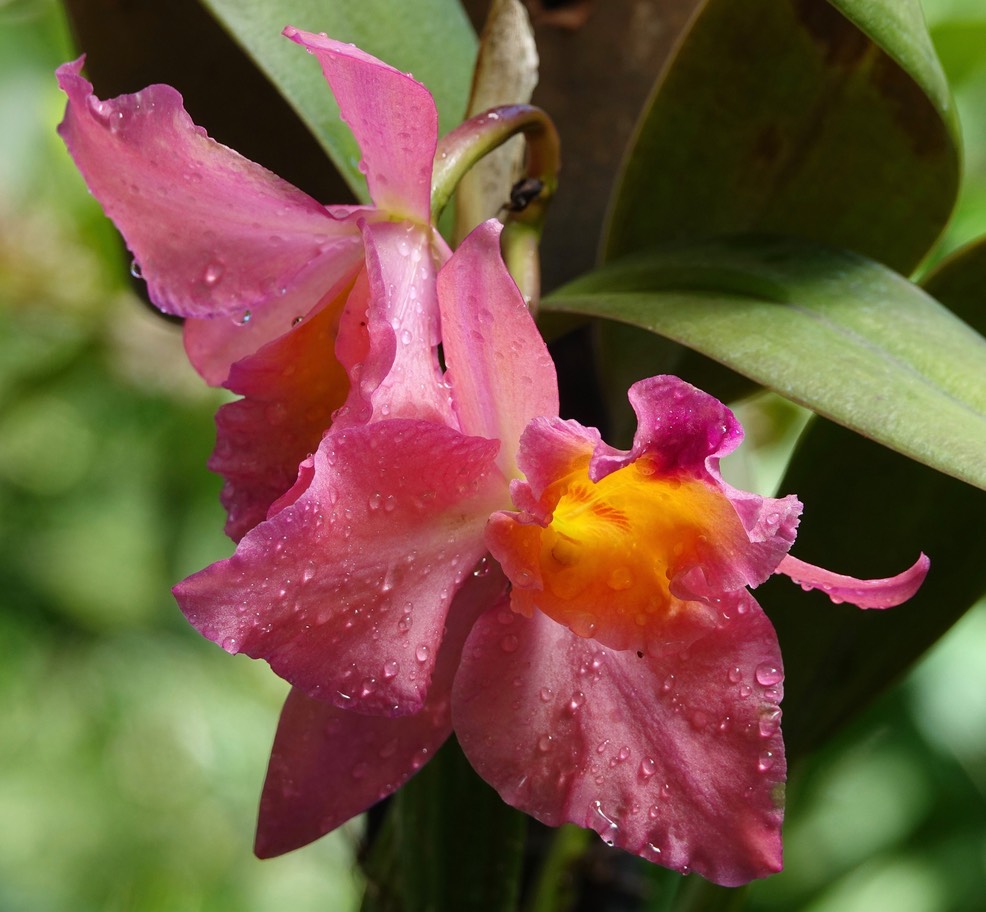
The food at the restaurant is very good and quite expensive. Among other things, they serve the best flan that either of us has ever had.
But the draw of the restaurant is not good food or cold drinks on a hot day but the seats by the edge of the porch. The ones which overlook the bird feeders below. At the time of our visit Yellow-winged Cacique, Grayish Saltator, San Blas Jay, West Mexican Chachalaca, Cinnamon Hummingbird, White-throated Thrush, Rufous-backed Thrush, and Golden-cheeked Woodpecker were coming in, in numbers.
TEHUALMIXTLE
Tehualmixtle is a small fishing town on the coast about an hour west of El Tuito. The road is sealed almost all the way. Parts of it are in good shape, allowing travel at the 60 k.p.h. speed limit with ease. Other parts of the road have some rather serious potholes and the going is slower.
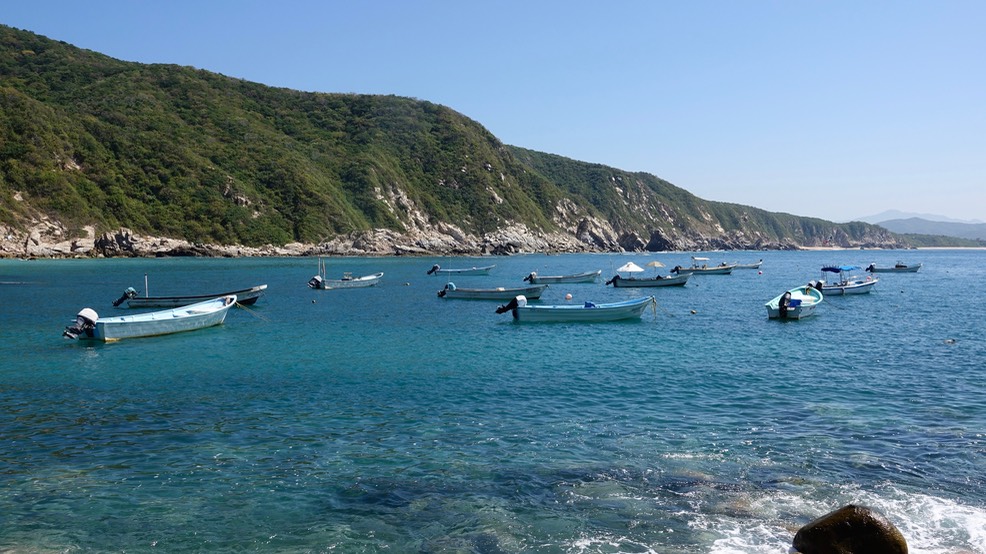
The town is picturesque - as in over the top picturesque. As you enter town there is a sign which directs you to a parking area to the right. There is limited parking in the town which hugs a small bit of “flat” area between the hills and the sea. From the parking area take the stairs to the street below and walk down hill to the bay; several restaurants are to be found there. The ocean is warm and crystal clear, fishing boats bob in the bay, tourists swim and frolic (but not many tourists), and locals free dive for various food stuffs.
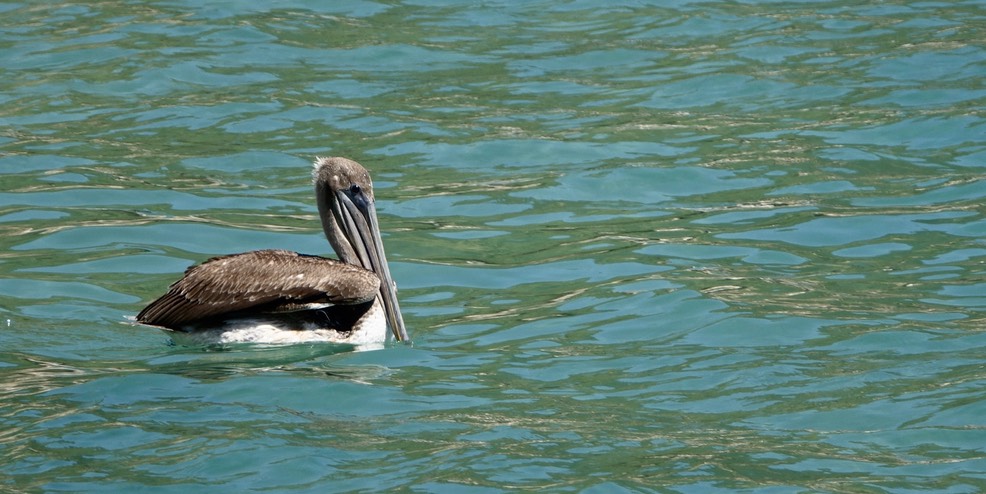
We visited the town on two day trips during our stay. I enjoyed ceviche while waiting for the Magnificent Frigatebirds to pose. There were not many bird species at the bay, just Brown Pelican and Magnificent Frigatebird, but they provided ample entertainment.
LA PROVINCIA
We spent a good part of a day birding along the road to La Provincia (leads east off of Mexico-200 about 15 kilometers north of El Tuito). Although I came away with little material, we did see Greater Pewee, Black-and-white Warbler, Rufous-capped Warbler, Squirrel Cuckoo, Laughing Falcon, Ivory-billed Woodcreeper, Pacific-slope Flycatcher, Blue-gray Gnatcatcher, and Varied Bunting.
BUTTERFLIES
One of the first things which we noticed when we arrived in Jalisco was a large white butterfly. As we sat on our porch in Rancho Primavera, where the butterfly was common, I noted that it was the size of a morpho and that it flew like a morpho - but it was white, not blue. I had cut my teeth on birding trails in the American tropics where large butterflies would share the trail with me, flashing blue whenever they wandered through a bit of sunlight.
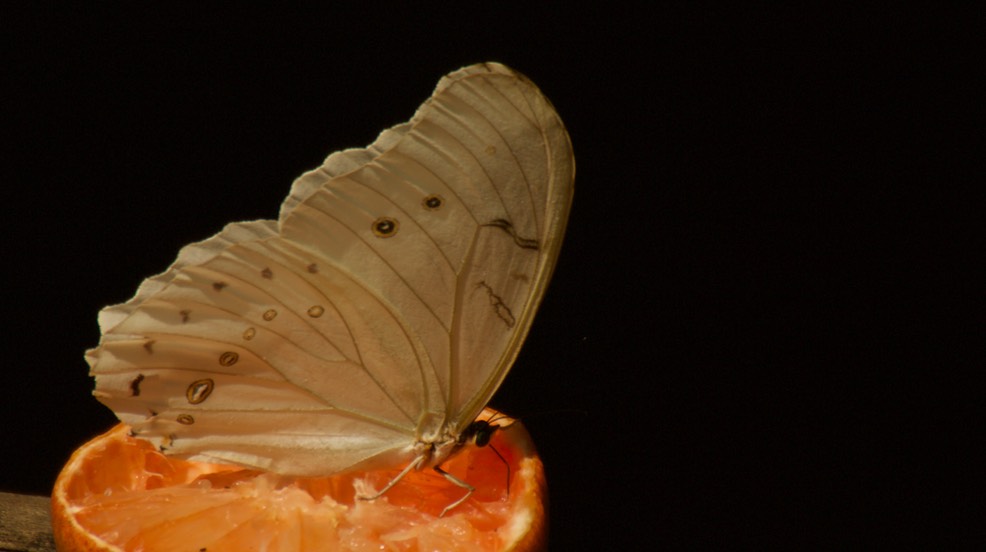
Although I did not know it, I was right: it was white and it was a morpho. Enter Morpho p. polyphemus, the White Morpho (photo above at our bird feeder at Rancho Primavera). The species is found from Mexico to Panama, with this subspecies taking up the range from Mexico to El Salvador. In the category of "all things are connected" comes the factoid that the species was described by John O. Westwood in 1851. Earlier in his life (1833) Westwood had helped edit one of the editions of Gilbert White’s “The Natural History and Antiquities of Selborne” - one of the great natural history books and one of the favorites in my library.
We encountered large numbers of butterflies, of many species (see Jalisco Photos for photographs of other species and the Butterflies - Jalisco video), as we wandered about. My focus was on birding so I have only a few images of these “other” winged creatures. Winged creatures like the Banded Peacock, Anartia fatima, shown below. I was able to video some of the butterflies in the area, including, Marpesia petreus (the Ruddy Daggerwing), Hamadryas amphinome (Red Cracker), Heliconius charitonia vasquezae, (Zebra Longwing), Marpesia chiron (Many-banded Daggerwing), Parides montezuma (Montezuma’s Cattleheart), and the White Morpho. In addition to the individual links, these videos have been added to the Insects, Arthropods, and Other Critters of This Type video portfolio.
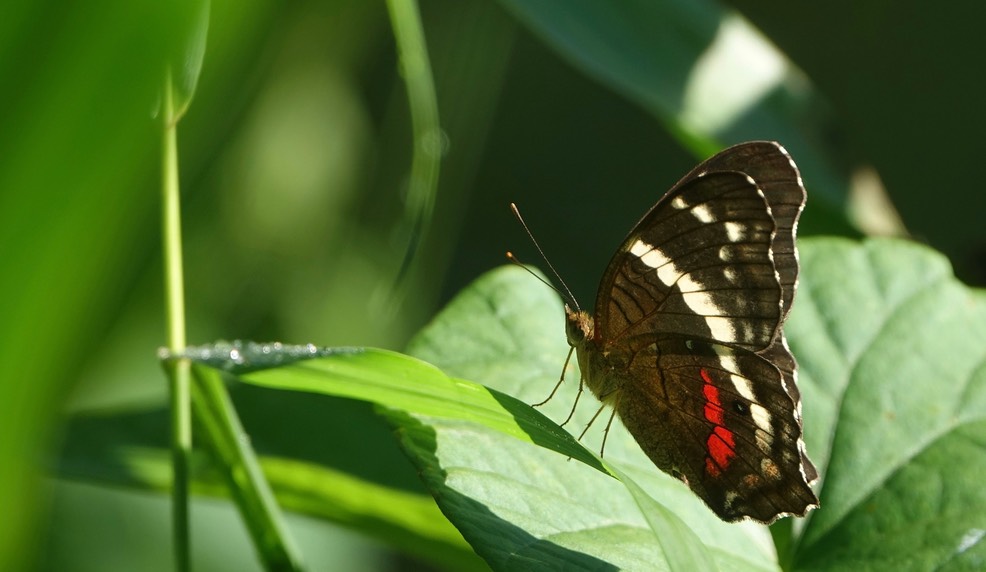
LIZARDS AND MAMMALS
During our trip I was able to video several species of lizards, including the Common Basilisk - sometimes called the Jesus Christ Lizard, Mexican Spiny-tailed Iguana, Buller’s Spiny Lizard, and the Green Iguana (Iguana iguana). Video of this species has been added to the Reptiles & Amphibian video portfolio. The only wild mammal that we saw on our trip was Collie’s Squirrel which was a regular visitor to the feeders at our house (video of that species has been added to the Mammals video portfolio).
EL TUITO & DÍA DE MUERTOS
El Tuito is the closest town to Rancho Primavera and provides the basic services. There are pharmacies, restaurants, grocery stores, a PEMEX station, etc. As in most villages in this area, the streets are cobblestone, which is both picturesque and bumpy. I came back from a birding day trip in heavy rain and the streets were flooded - no images to show the event but it was beautiful and annoying. During the heat of mid-afternoon the town slows down a bit but livens up in the evening. The photograph below is of part of the town square.
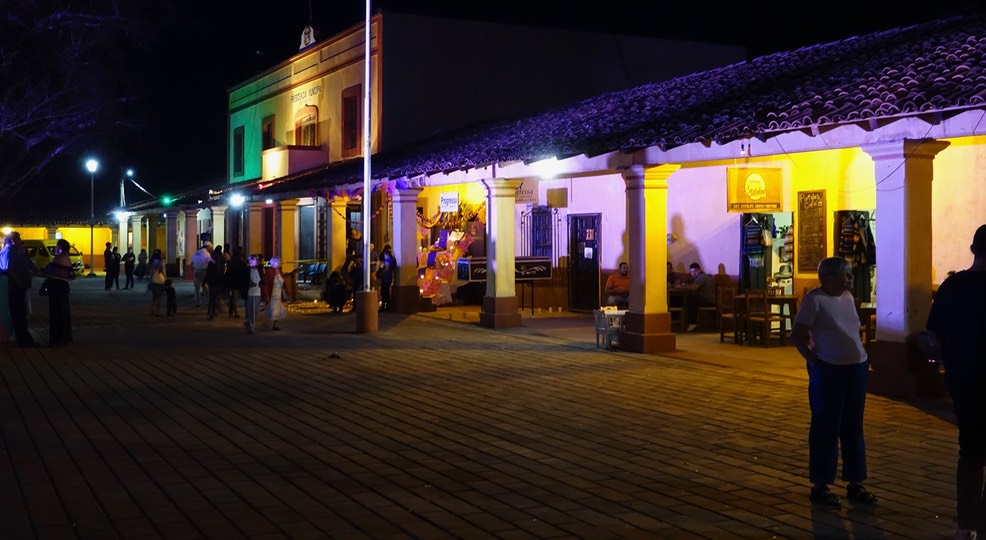
Bonnie (Rancho Primavera) and her mom took Rebecca and me to the Day of the Dead festivities in town. I had been to Day of the Dead festivities in and around Oaxaca City. The celebrations in El Tuito were a nice counterpoint to those in Oaxaca. El Tuito is a small town and the celebrations here were less about partying and more about community.
Sharp images of people and events are often those most cherished. Sometimes a photograph in low light and a lot of movement captures the color and feel much better.
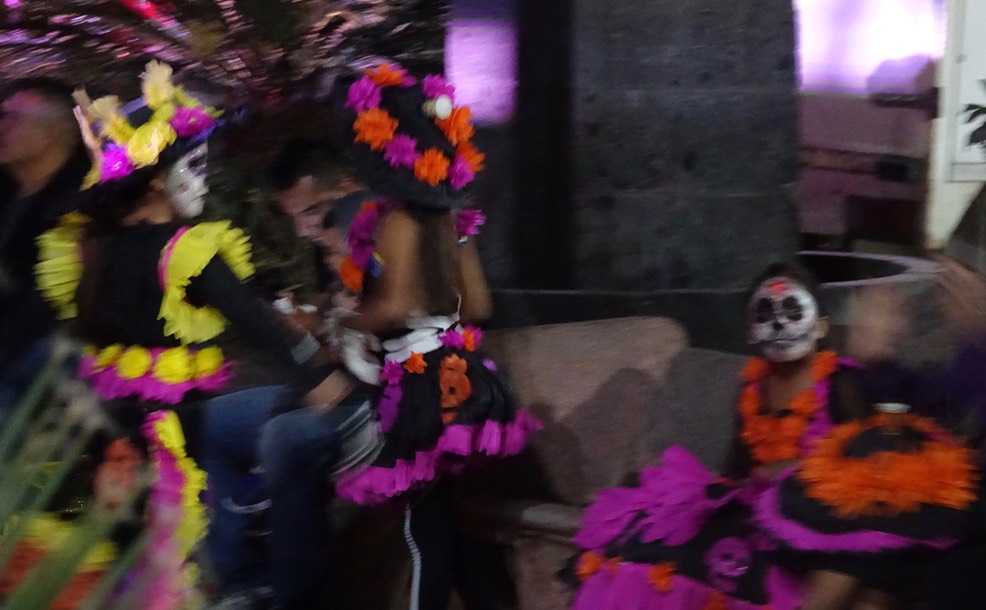

If you are looking for local art, made from local products, there is an excellent gallery of paintings, pottery and other art work at the edge of town. Coming from Rancho Primavera there is a slight hill as you enter El Tuito. At the base of the hill, on your right, is Galeana Street, a narrow one-way road which will turn left after a bit. At that turn you will find the gallery. Very nice works at reasonable prices.
PUERTO VALLARTA
We took a day off to visit the regional museum in Puerto Vallarta but found it closed for renovation. We had to settle for roaming around the south part of the city, looking at street murals and public sculpture, the Church of Our Lady of Guadalupe (La Iglesia de Nuestra Senora de Guadalupe), and what proved to be a real gem, the Museo Naval (Navy Museum) which is on the waterfront. The history which is told in the museum is definitely different from the perspective seen in history books from the United States. It is well worth the time.

SUMMARY
Our stay at Rancho Primavera proved to be an excellent decision. The accommodations are great, the location is central to the things we wanted to do, and as a center for natural history - you never really have to leave the ranch. The following video is a summary of the general rural Jalisco experience: Tehualmixtle on the coast; El Tuito, the administrative center on the Day of the Dead; and Rancho Primavera. This video has been added to the Travel Videos From Around The World video portfolio.
iNaturalist has an excellent species list for the fauna of Cabo Corrientes.